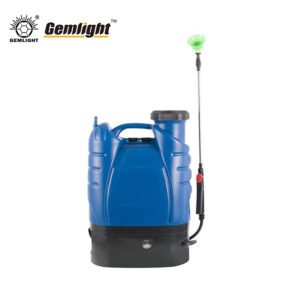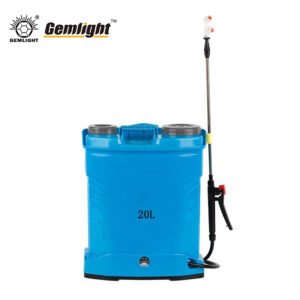What Is the Best Machete to Buy: Ultimate Buyer’s Guide
When U are searching for what is the best machete to buy, understanding the core features is essential. Moreover, the right machete can improve efficiency and safety for outdoor, agricultural, or survival work. In addition, choosing a high-quality machete reduces fatigue and ensures long-term durability.
The best machete is more than just a blade; it combines sharpness, strength, and comfort. However, many buyers overlook factors such as tang design, blade shape, and handle ergonomics. These aspects can significantly affect performance, especially in heavy-duty applications.
1. Blade Material: High-Carbon vs Stainless Steel
Blade material is the first factor to consider when determining what is the best machete to buy. High-carbon steel is highly durable and maintains sharpness even after repeated chopping. However, it requires regular maintenance to prevent rust.
Stainless steel, on the other hand, is more resistant to corrosion, making it suitable for humid or wet conditions. In addition, stainless steel machetes are generally easier to maintain, but they may not hold an edge as long as high-carbon steel. Choosing the right steel depends on U’s specific use case and environment.
2. Blade Length and Thickness: Matching Tasks
Selecting the correct blade length and thickness is crucial. For example, short blades between 10–14 inches are easier to handle and ideal for precision tasks or camping. Medium blades, ranging from 16–24 inches, offer versatility for clearing brush or harvesting crops. Consequently, they are often recommended for most agricultural and outdoor tasks.
Long blades over 24 inches provide extended reach and more chopping power. However, they can become tiring during prolonged use, especially for repetitive clearing. Blade thickness also affects performance: thicker blades excel at heavy chopping, whereas thinner blades are better for slicing and lighter work.
3. Blade Shape: Straight, Curved, or Serrated
The shape of the blade is another key consideration when deciding what is the best machete to buy. Straight blades are versatile and effective for general cutting and slicing. Moreover, they are easier to sharpen and maintain.
Curved blades, such as parang or kukri styles, offer more leverage, making it easier to cut through dense vegetation or sugarcane. In addition, some machetes feature a serrated back edge for sawing vines or rope, providing extra utility. However, serrated edges require more attention during sharpening.
4. Handle Design: Comfort, Safety, and Control
Handle ergonomics directly influence user comfort and safety. When considering what is the best machete to buy, look for handles that provide a firm grip and reduce vibration. Wood handles are classic and comfortable but need occasional care. Rubber handles absorb shock and prevent slipping in wet conditions. Polymer handles are lightweight and durable, resisting moisture and impact.
Furthermore, the balance between blade and handle is essential. A well-balanced machete allows longer use without fatigue, which is crucial for agricultural or professional applications.
5. Tang Construction: Strength That Lasts
Tang refers to how far the blade steel extends into the handle. Full tang construction provides maximum strength and durability, making it ideal for heavy chopping or survival work. Partial tang machetes are less durable and better suited for lighter, occasional tasks.
Therefore, when deciding what is the best machete to buy, a full tang design is generally recommended for professionals and serious outdoor users.
6. Choosing the Right Machete for Specific Applications
Your use case strongly influences the best choice:
-
Brush Clearing & Jungle Work: Medium to long blades, high-carbon steel, straight or curved designs.
-
Agriculture & Sugarcane Cutting: Long, lightweight blades with ergonomic handles for repetitive cutting.
-
Camping & Survival: Durable, multi-use blades for chopping, slicing, and shelter building.
-
Trail & Path Maintenance: Parang or curved blades for fast clearing with minimal effort.
Moreover, understanding your work environment ensures U select a machete that maximizes efficiency and reduces injury risk.
7. Maintenance Tips: Keep Your Machete in Peak Condition
Even the best machete requires care:
-
Sharpen Regularly: Maintain a clean, sharp edge to improve safety and efficiency.
-
Clean After Use: Remove sap, dirt, and moisture to prevent corrosion.
-
Oil High-Carbon Steel: Protect the blade and extend its lifespan.
-
Inspect Handle & Sheath: Ensure no cracks or looseness that could compromise safety.
Consequently, regular maintenance ensures your machete performs reliably for years, making it a cost-effective investment.
8. Common Mistakes to Avoid
-
Buying a cheap, low-quality machete that breaks easily.
-
Choosing the wrong blade length; too long causes fatigue, too short reduces reach.
-
Ignoring tang type; partial tang may fail under heavy use.
-
Neglecting sharpening and cleaning, even for top-quality blades.
In addition, failing to consider handle ergonomics can lead to hand fatigue or accidents. Avoiding these mistakes guarantees the best results from your investment.
9. Summary: How to Decide What Is the Best Machete to Buy
To answer what is the best machete to buy, focus on:
-
Blade material (high-carbon steel for heavy-duty tasks)
-
Blade length and thickness (match to your work)
-
Blade shape (straight, curved, or serrated)
-
Handle comfort and tang type
-
Primary use case (agriculture, survival, clearing)
Ultimately, a well-chosen machete improves work efficiency, reduces fatigue, and lasts for years. Investing in quality ensures U get the most reliable tool for outdoor, agricultural, or survival tasks.
View products




